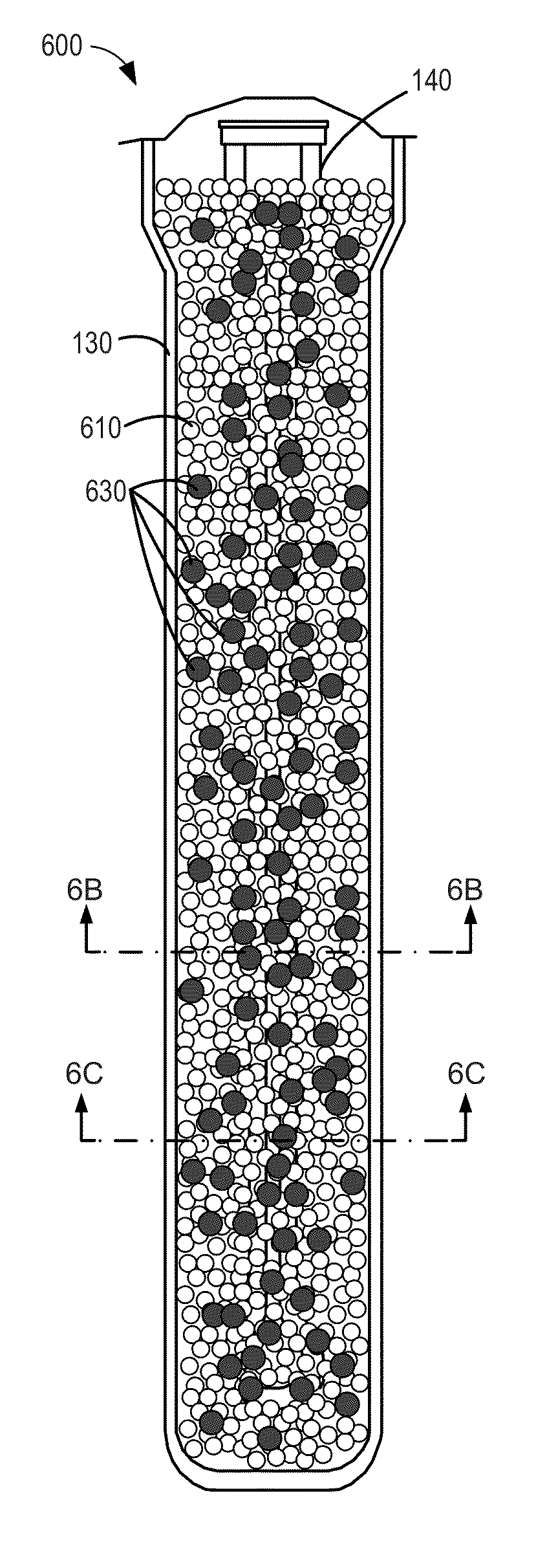Porous absorbent for sodium metal halide cells
a sodium metal halide and absorbent technology, applied in cell components, sustainable manufacturing/processing, batteries, etc., can solve the problems of reducing the charge capacity of sodium cell, reducing the cell life, and non-uniform distribution of liquid electrolyte throughout the cell cathode granule bed after frequent cycling
- Summary
- Abstract
- Description
- Claims
- Application Information
AI Technical Summary
Benefits of technology
Problems solved by technology
Method used
Image
Examples
Embodiment Construction
[0034]The following description relates to various embodiments of a battery cathode compartment, also referred to herein as a cell cathode compartment, a battery, also referred to herein as a cell, and a method for preparing a cell compartment (e.g. a battery compartment).
[0035]In one embodiment, a cell cathode compartment may comprise a granule bed comprising metal granules, metal halide granules, and sodium halide granules. The cell cathode compartment may further include a liquid electrolyte dispersed in the granule bed, and a porous absorbent disposed in the granule bed, wherein a transverse cross-sectional distribution of the porous absorbent in the granule bed varies in a longitudinal direction from a first position to a second position. In this manner, distribution of liquid electrolyte throughout the granule bed can be maintained even after repeated charge-discharge cycles.
[0036]A longitudinal cross-section of a sodium metal halide cell 100 is shown in FIG. 1. The sodium met...
PUM
| Property | Measurement | Unit |
|---|---|---|
| thickness | aaaaa | aaaaa |
| porosity | aaaaa | aaaaa |
| total volume | aaaaa | aaaaa |
Abstract
Description
Claims
Application Information
 Login to View More
Login to View More - R&D
- Intellectual Property
- Life Sciences
- Materials
- Tech Scout
- Unparalleled Data Quality
- Higher Quality Content
- 60% Fewer Hallucinations
Browse by: Latest US Patents, China's latest patents, Technical Efficacy Thesaurus, Application Domain, Technology Topic, Popular Technical Reports.
© 2025 PatSnap. All rights reserved.Legal|Privacy policy|Modern Slavery Act Transparency Statement|Sitemap|About US| Contact US: help@patsnap.com



